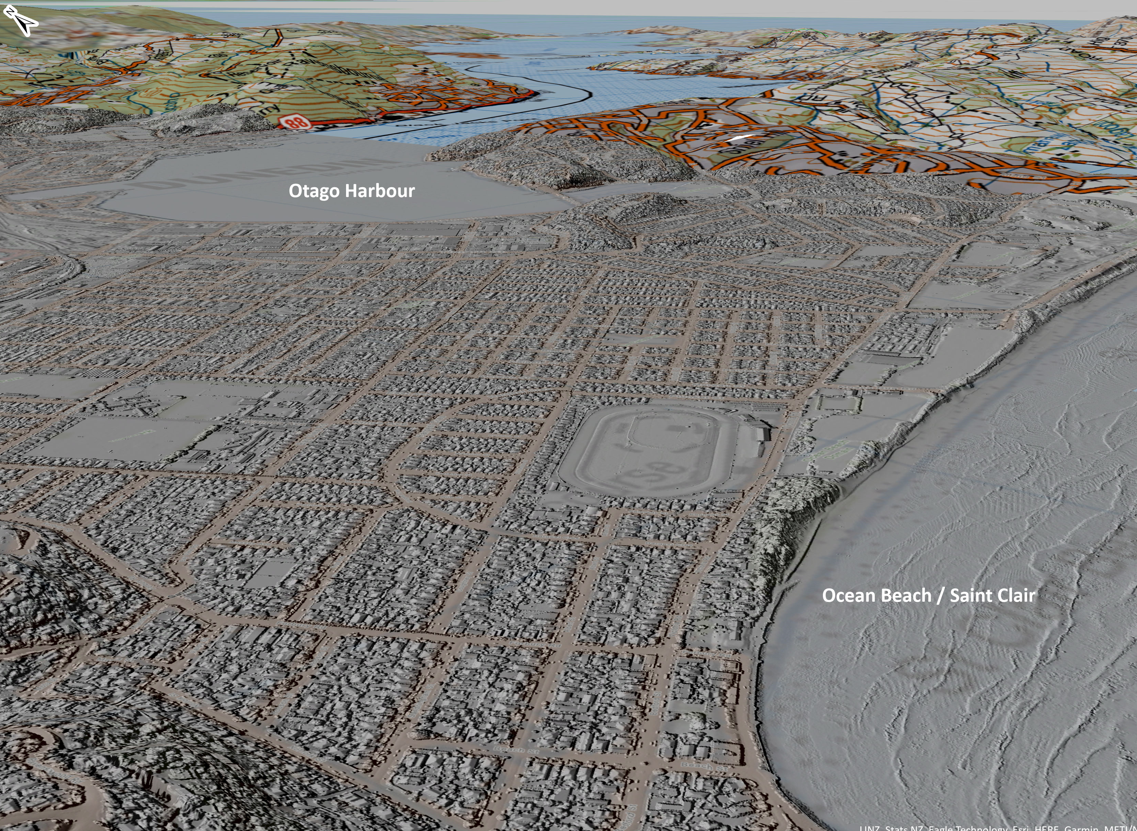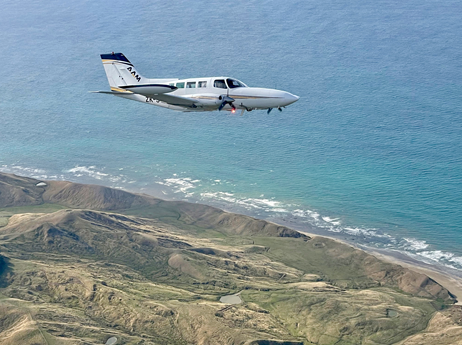Otago Regional Council Spatial Analyst Andrew Welsh says the new LiDAR (Light Detection and Ranging) measurement of land elevations and subsequent 3D modelling has many applications.
But it will be especially important for insights into natural hazards.
“In terms of natural hazards, the LiDAR mapping will complement ongoing work on coastal hazards and rockfall in the Dunedin area.”
Applications of the data in the future will include infrastructure management, hydrology and catchment mapping and modelling.
The collection of the data is an ongoing partnership between Toitū Te Whenua Land Information New Zealand and the ORC.

50 sq km of Dunedin and Mosgiel data
About 50 square kilometres of data covering Dunedin and Mosgiel urban areas is now available online from the LINZ Data Service and Open Topography websites, with a further more than 4000 square kilometres of coastal Otago becoming available online shortly.
The third and final phase of data-capture will get underway in July in the Manuherekia River catchment, then some surrounding areas in Central Otago, later this year. In total, about 8000 sq km of Otago LiDAR will be collected and publicly accessible.

How the data capture works
In low level, fixed-wing flyovers firing light pulses to the ground and in measuring the return echo, the point measurements of the ground surface’s elevation measurements were recorded.
The pulse allows for discrimination between different surface types and ground features, such as trees and buildings against the bare earth ground surface.
The ORC has in the past noted that for natural hazards, a major priority was the data collation of Dunedin city’s coastline and urban areas, with LiDAR complementing other work in those areas.
Next - Waitaki River to the Catlins
The coastal data will eventually run continuously from the Waitaki River, south to the Catlins and cover about 4000 sq km, offering a higher resolution than previous datasets.
To achieve the higher resolution, the LiDAR’s use over Dunedin and Mosgiel area was pinpointed using eight laser pulses per square meter of earth, as opposed to the standard four hits per square meter; the subsequent resolution boost allowing a much more detailed look at the ground surfaces shape and characteristics.
“It’ll give a high-resolution data set for Dunedin and Mosgiel, essentially a ‘lens’ on the elevation of the land surfaces,” Mr Welsh says.
Toitū Te Whenua LINZ baseline elevation data
LINZ Senior Technical Leader Elevation and Imagery Bjorn Johns says ORC is one council of 10 regions partnering with Toitū Te Whenua LINZ to obtain a baseline elevation data set.
He says the project’s co-funding by the Government’s Provincial Growth Fund supports the regional expansion of Toitū Te Whenua’s 3D mapping programme, which will provide a significant increase in national coverage.
Mr Johns says current LiDAR data coverage across the country is around 25% and is set to increase to 80% by 2024, when the project is due to be completed.
Links to the LiDAR dataset
Links for examples of LiDAR
- More about the Toitū Te Whenua LINZ LiDAR elevation data programme
- See topographic data from throughout New Zealand on the LINZ Data Service
